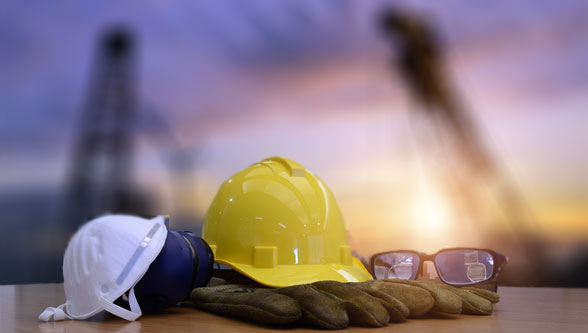Construction is an industry filled with potential dangers. The good news is that you can minimize them by using the appropriate safety measures. Here are 10 that could help you reduce accidents and keep people protected on the job.
1. Provide Training Before Tool Use or Heavy Equipment Operation
Many pieces of equipment found on construction sites are especially dangerous if people don’t know how to use them. Never assume that workers understand how to handle the tools and equipment provided. Give them the training to ensure that they do, and update the educational materials so that they reflect current procedures.
Some companies run certification programs for heavy equipment operators. You may require job candidates to show their certificates before hiring them. Understand the risks to people near heavy equipment, too. Instruct drivers to always move the machines slowly and stay aware of their surroundings.
2. Assess Each Site to Identify and Minimize Dangers
All construction sites have risks, but they are not universal across locations. For example, someone working at a height faces different threats than someone working with electricity. Take the time to evaluate each site and look for all the dangerous areas.
Determine the best ways to minimize risks. That may mean investing in new fall protection or installing railings to help people walk safely across slippery surfaces. Checking out each site before work begins is not sufficient, however. You must also monitor and limit hazards throughout a project’s timeline.
3. Require Every Worker to Wear Protective Equipment
Protective equipment for construction workers ranges from steel-toe footwear to high-visibility vests. Clarify your minimum requirements for the gear a person must have before coming to work so that there are no uncertainties.
Inspect protective equipment for continued proper functionality, too. It may not serve its purpose if the items become overly worn. For example, a broken snap or strap on a hard hat could cause it to fall off if a person sustains a blow.
4. Implement Practices for Safe Site Visits
It’s also wise to enforce safety measures for site visitors. Perhaps a client wants to check the progress on a new building, or a team leader at a contracting company needs to see the worksite before agreeing to provide services for a project.
You could make every person sign in on arrival and only move around the area while accompanied by an authorized person. Another smart thing to do is decide that all visitors must have their visits approved before coming. As the COVID-19 pandemic makes it crucial to maintain safe distances, virtual visit software is becoming popular for letting people see construction zones remotely.
5. Investigate How to Reduce Fatigue
Research shows that construction workers who feel tired during their workweeks are more likely to experience difficulties with physical and cognitive functions. That means fatigue could directly contribute to accidents. Construction work can be physically demanding, but practical ways exist to reduce the strain. Giving workers access to the right equipment is a great start.
For example, a boom-style concrete pump can take the material to the upper floors of a tall structure, such as a high-rise apartment building. The machine does the job quickly, safely and easily. It’s also arguably much less labor-intensive than earlier methods of transporting concrete with cranes and even buckets.
In addition to providing the right tools for every job, ensure that employees take regular breaks and know how to spot the signs of overexertion, no matter which tasks they do.
6. Install Signs to Remind People of the Risks and Requirements
People can also make construction sites safer by using signs that let individuals know about ongoing or possible risks. For example, a part of a construction site where workers regularly use loud equipment might have signs telling people to insert ear protection before entering it. Alternatively, an area of high traffic from heavy machinery might have speed limit signs or ones that tell pedestrians to stay alert.
Make sure the signs you choose are easy to read and visible from a distance. It’s also effective to have a mixture of text-only and picture-based signage. For example, post a written warning about wearing safety goggles, plus an image of someone donning them. That approach helps emphasize mandatory procedures.
7. Establish Procedures for Reporting Faulty Equipment
Teach construction workers how to inspect tools and machines before using them. Make checklists available so that people can get into routines of knowing what to examine and when.
Discuss the importance of never using equipment that fails inspection. Mention what process people should follow after noticing problems. Should they immediately report the issues to a supervisor, or fill out an official report? Confirming precisely what the process is eliminates doubts and encourages adherence to a standard procedure that everyone knows and understands.
8. Invest in Construction Wearables to Improve Safety
There’s an ongoing push to attract younger workers to the construction sector. Some people think that focusing on safety technology could help meet that goal. Outside of recruitment, however, high-tech safety products are useful for people of all generations.
Products exist today that give automatic alerts when people fall, sending assistance to their locations. Others measure characteristics such as a worker’s heart rate and advise when they should take breaks. Companies have also developed products specifically to help construction businesses manage the COVID-19 crisis. These wearables emit sounds when people stay too close to each other for prolonged periods. They also assist with contact tracing.
9. Remain Mindful of Weather-Related Hazards
Since many construction workers stay outside for their whole shifts, they are at an elevated risk of weather dangers. Always take seasonal considerations into account for any projects and determine what you can do to promote safety.
People working in hot temperatures are more likely to become dehydrated, especially as they lose fluid due to sweating. Schedule water breaks and think about how accessories such as cold packs worn around the neck or head could help people beat the heat.
The winter brings concerns to accommodate, too. Recommend that workers wear layers, and shift your work hours to occur in the warmest part of the day when possible.
10. Establish a Strong Safety Culture
You don’t want potential or current workers to get the impression that you only care about safety if regulatory authorities threaten to issue fines for non-compliance. Use your words and actions to demonstrate that staying safe is an ongoing priority. Make it so that people quickly associate excellent safety measures with your company.
You might hold monthly team meetings that reward people for working safety and urge attendees to weigh in with their thoughts about how to make improvements. Many companies also keep running tallies of the number of working hours completed without incidents. Seeing the total rise keeps people motivated and highlights how preventing accidents is a collective effort.
Safe Practices Lead to Success
Maintaining worker safety at your worksites could increase efficiency while reducing accidents. Working while limiting the threats is a continuous goal — not one you merely strive for occasionally. These 10 tips can get you off to a good start in making gains to cut the risks faced by your employees.
Article by —

Megan Ray Nichols
Freelance Science Writer
nicholsrmegan@gmail.com
www.schooledbyscience.com/about
[gap style=’10’]


